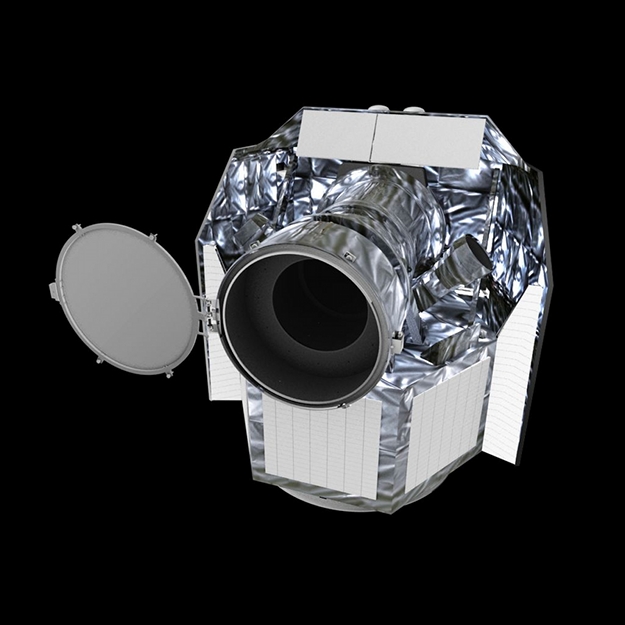[SatNews] Airbus Defence and Space has become the prime contractor for the CHEOPS (CHaracterisingExOPlanet Satellite) satellite, the first small type mission of ESA’s (European Space Agency) scientific program.
The main objective of the CHEOPS mission is to monitor planetary transits by means of ultrahigh precision photometry on known stars that have planets orbiting them. The CHEOPS mission formed an important part in the celebration of ESA’s 50th anniversary at the European Astronomy Center of ESA in Madrid.

Artist's impression of CHEOPS – Front view. Credit: ESA - C. Carreau
In monitoring the brightness of a star, scientists will look for signs of “transit” of a planet as it passes briefly in front of its star. The satellite will thus be able to determine the exact radius of the planet. For planets with known masses, this will allow their density to be ascertained, providing an indication of their internal structure, formation and evolution. A second goal is to provide golden targets for in-depth characterization using future ground (e.g., European Extremely Large Telescope) and space-based (e.g., James Webb Space Telescope) spectroscopic facilities.
“The mission represents a challenge for both ESA and industry, as it requires a very demanding development program in terms of design, quality and planning in order to achieve launch in 2017,” said Head of Space System François Auque. “I’m confident that our teams, building on their expertise in small Earth Observation missions such as Ingenio and Sentinel-5 Precursor will rise to this latest scientific challenge.”
CHEOPS is the first of the small-size (S class) missions of ESA, and was selected from 26 other proposed missions. These missions are designed to take full advantage of known technologies. They should be low cost and rapidly developed missions, in order to offer greater flexibility in response to new ideas from the scientific community. The spacecraft is based on the Airbus Defence and Space AstroBus family of low cost satellite platforms (following on from Spot 6 and 7, KazEOSat-1), and the ninth for an ESA program following on from Sentinel 5 Precursor and the MetOp Second Generation satellites. The company will leverage their experience with the AstroBus family in order to deliver CHEOPS on time.
The satellite will fly at an altitude of between 650 and 800km, in a dusk to dawn helio-synchronous orbit at an inclination of about 98 degrees and will have a design lifetime of 3.5 years. The University of Bern is building the satellite’s on-board instrument CIS (CHEOPS Instrument System) which features a 33.5cm diameter Ritchey-Chrétien telescope and a high performance backside illuminated CCD (Charge-Coupled Device) detector.
For more information, please visit the Airbus Defence and Space infosite

